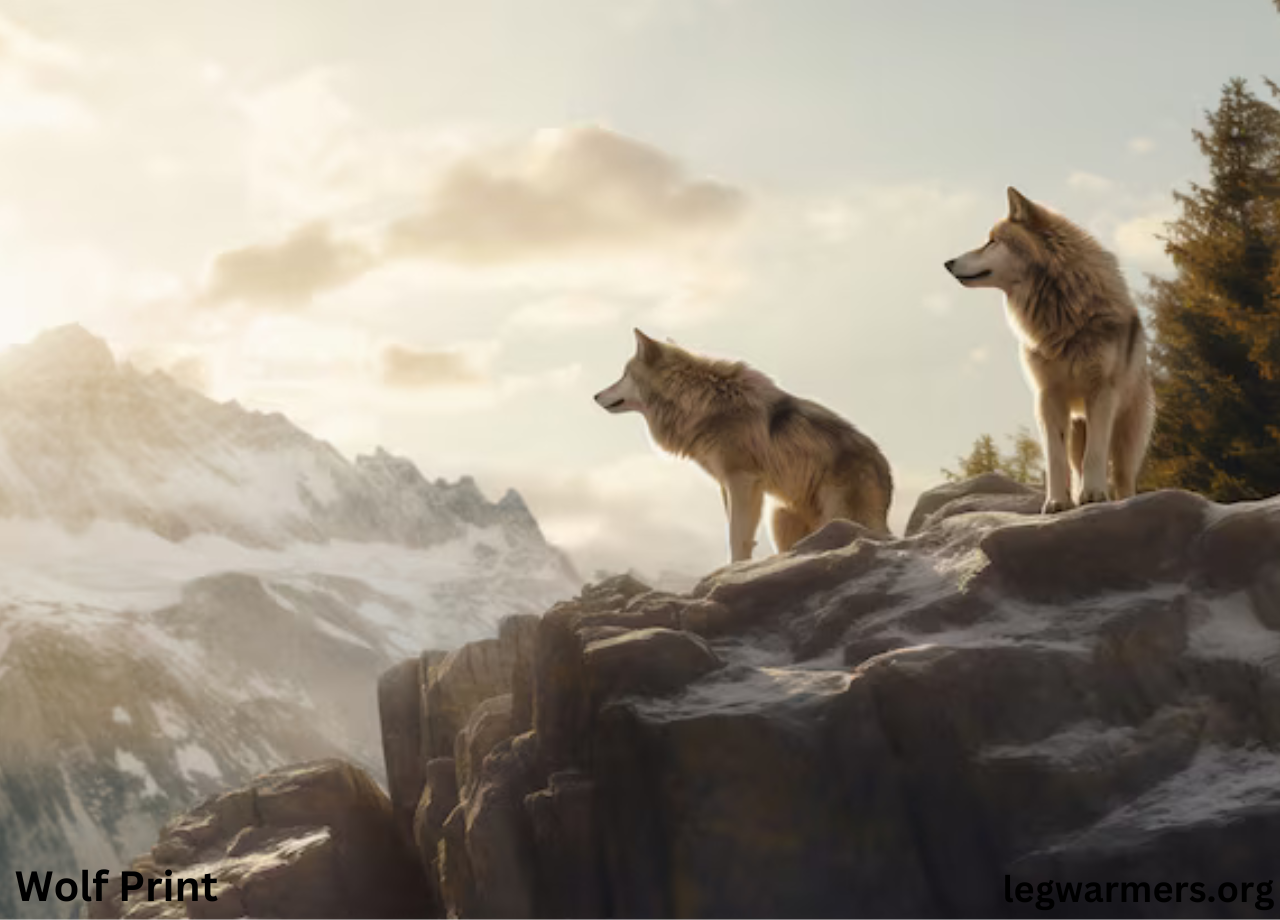Introduction to Wolf Print
When you come across a wolf print in the wild, it’s like finding a hidden message from one of nature’s most enigmatic creatures. These tracks tell stories of survival, dominance, and the untamed spirit of the wilderness. But what exactly is a wolf print, and why is it so significant? In this article, we’ll explore the fascinating world of wolf prints, from their anatomy and identification to their cultural importance and role in modern research.
Table of Contents
The Anatomy of a Wolf Print
Structure and Shape of Wolf Paw Prints
At first glance, a wolf print might seem similar to any other canine track, but a closer look reveals unique characteristics. A typical wolf print is about 4 to 5 inches long and 3.5 to 4.5 inches wide. The four toes are arranged in a forward-facing pattern, with a large, triangular pad at the base. The claws often leave distinct marks, especially on soft ground.
Differences Between Front and Hind Prints
Wolves have four toes on both their front and hind feet, but the prints from each can differ slightly. The front paw prints are generally larger and more robust, reflecting the wolf’s need to support its weight as it runs or hunts. The hind prints, on the other hand, are smaller and more elongated. This difference can be crucial for trackers trying to determine the direction a wolf is traveling.
How Wolf Prints Differ from Dog Prints
One of the biggest challenges in identifying wolf prints is distinguishing them from those of large dogs. While they may look similar, wolf prints tend to be more symmetrical, and the toes are closer together. Additionally, wolves have a more direct register when they walk, meaning their hind prints often step directly into the front prints, creating a neat, linear pattern.
Tracking Wolves Through Their Prints
The Art of Tracking Wolves
Tracking wolves through their prints is both an art and a science. It requires patience, keen observation, and an understanding of the environment. Experienced trackers can tell a lot from a single print—whether the wolf was walking, running, or stalking prey. They can also determine the size of the pack and even identify individual wolves based on subtle differences in their prints.
Identifying fresh vs. old prints
One key skill in tracking is distinguishing fresh prints from old ones. Fresh wolf prints will have sharp, well-defined edges, while older prints may be eroded by wind, rain, or other environmental factors. The moisture level in the ground also plays a role; prints made in wet or muddy conditions are usually more distinct than those in dry, hard soil.
Environmental Factors Affecting Wolf Prints
Several environmental factors can affect the appearance of wolf prints. Snow, for instance, can both preserve and obscure tracks, depending on its condition. Wet, heavy snow will retain prints more clearly than light, powdery snow, which can easily be blown away. Similarly, sandy or loose soil may not hold the print’s details as well as firmer ground.
The Cultural Significance of Wolf Prints
Wolf Prints in Native American Culture
In many Native American cultures, wolves are revered as powerful spiritual beings, and their prints hold significant meaning. They are often seen as symbols of guidance, protection, and loyalty. Some tribes believed that following a wolf’s tracks could lead one to important discoveries or provide guidance on a spiritual journey.
Symbolism and Myths Surrounding Wolf Tracks
Wolves and their tracks feature prominently in various myths and legends around the world. In some cultures, wolf tracks are considered omens or signs from the gods. For example, the Norse mythology often depicted wolves as harbingers of change or as guardians of sacred spaces, and their prints were seen as sacred markers.
Use of Wolf Prints in Art and Tattoos
Wolf prints have found their way into modern art and body art as well. Tattoos of wolf prints are popular symbols of strength, freedom, and connection to nature. Artists often use the image of a wolf print to convey a sense of mystery and wildness, tapping into the primal allure that wolves have held over human imagination for centuries.
Wolf Prints in Modern Research and Conservation
Using Wolf Prints for Population Studies
Wolf prints are more than just marks on the ground; they are vital tools for scientists studying wolf populations. By analyzing the size, frequency, and location of prints, researchers can estimate population sizes, monitor pack movements, and assess the health of the ecosystem. These studies are crucial for understanding the impact of human activities on wolf habitats.
Tracking endangered wolf species
For endangered wolf species, such as the Mexican gray wolf or the red wolf, tracking their prints is an essential part of conservation efforts. By following their tracks, conservationists can gather data on breeding pairs, identify critical habitats, and develop strategies to protect these species from extinction.
The Role of Citizen Scientists in Monitoring Wolf Prints
Citizen scientists play an increasingly important role in monitoring wolf populations. Equipped with GPS devices and a bit of training, these volunteers can help track wolf prints in remote areas, providing valuable data that might otherwise be difficult to obtain. Their contributions are vital to the success of many conservation programs.
Common Misconceptions About Wolf Prints
Debunking Myths: Dog vs. Wolf Tracks
One common misconception is that any large canine track must belong to a wolf. In reality, many dog breeds can leave prints that are almost indistinguishable from wolf prints, especially in areas where wolves are not native. It’s important to look for subtle differences, such as the spacing between the toes and the depth of the print, to make an accurate identification.
Misidentification in the Wild
Misidentification of wolf prints is not uncommon, even among experienced trackers. Factors like weather conditions, ground texture, and animal behavior can all influence how a print appears. It’s always a good idea to cross-reference prints with other signs of wolf activity, such as scat or fur, to confirm a sighting.
How to Accurately Identify Wolf Prints
To accurately identify wolf prints, focus on the details: the size, symmetry, claw marks, and the pattern of the tracks. Understanding the environment and the behavior of wolves in that area can also provide clues. If you’re ever in doubt, consult with a wildlife expert or use tracking guides specifically designed for your region.
Wolf Prints in Popular Media
Representation of Wolf Prints in Movies and TV
Wolf prints have become iconic symbols in popular media, often representing wilderness, danger, or the call of the wild. From animated films like “The Jungle Book” to TV shows like “Game of Thrones,” where dire wolves play a prominent role, wolf prints are used to evoke a sense of mystery and adventure.
The Influence of Wolf Prints in Fashion and Design
Wolf prints have also influenced fashion and design, appearing on everything from clothing and accessories to home decor. The rugged, primal nature of the wolf is often used to convey strength, resilience, and
individuality in fashion trends. Designers often use wolf prints as motifs to evoke a connection with nature, tapping into the deep-rooted symbolism associated with wolves.
Practical Tips for Finding Wolf Prints
Best Locations and Seasons for Spotting Wolf Prints
If you’re keen on finding wolf prints in the wild, timing and location are key. Wolves are more active during the winter months, particularly in snowy regions where their prints are more visible. Look for tracks in remote, forested areas or along trails that wolves might use to hunt or travel. Early morning or late evening is often the best time to find fresh prints, as wolves are most active during these hours.
Tools and Techniques for Beginners
For beginners, a few tools can make the process of tracking wolf prints easier and more accurate. A good pair of binoculars, a GPS device, and a field guide to animal tracks are essential. Digital cameras or smartphones are useful for capturing prints for later analysis. When following a trail, move slowly and observe the ground carefully, paying attention to changes in terrain that might affect the visibility of prints.
Safety Tips When Tracking Wolves
Tracking wolves can be thrilling, but safety should always come first. Wolves are generally wary of humans, but it’s important to respect their space. Avoid tracking alone, stay on marked trails, and be aware of your surroundings. If you encounter fresh prints, it’s a good idea to keep your distance and observe from afar, as wolves might be nearby.
Conclusion
Wolf prints are more than just impressions in the dirt; they are windows into the world of one of nature’s most captivating creatures. From their unique anatomical features to their cultural and scientific significance, wolf prints offer a fascinating glimpse into the lives of these majestic animals. Whether you’re a seasoned tracker or a curious nature enthusiast, understanding wolf prints can deepen your connection to the natural world.
FAQs
1. What Do Wolf Prints Look Like?
Wolf prints are large, symmetrical, and typically measure around 4 to 5 inches long. They have four toes with distinct claw marks, and the paw pad is triangular in shape.
2. How Can You Tell the Difference Between Wolf and Dog Prints?
Wolf prints are more symmetrical, and the toes are closer together compared to dog prints. Wolves also tend to walk in a straight line, so their hind prints often overlap with the front prints.
3. Why Are Wolf Prints Important in Conservation?
Wolf prints help researchers monitor wolf populations, track endangered species, and gather data crucial for conservation efforts. They provide insights into the health and movement of wolf packs.
4. Where Are You Most Likely to Find Wolf Prints?
You can find wolf prints in remote, forested areas, especially in regions with a healthy wolf population. Winter months are ideal for spotting prints in the snow.
5. What Should You Do If You Find Fresh Wolf Prints?
If you find fresh wolf prints, it’s best to observe from a distance and avoid disturbing the area. Wolves may be nearby, so proceed with caution and respect their natural habitat.
You Can See Latest Updates On: Leg Warmers



